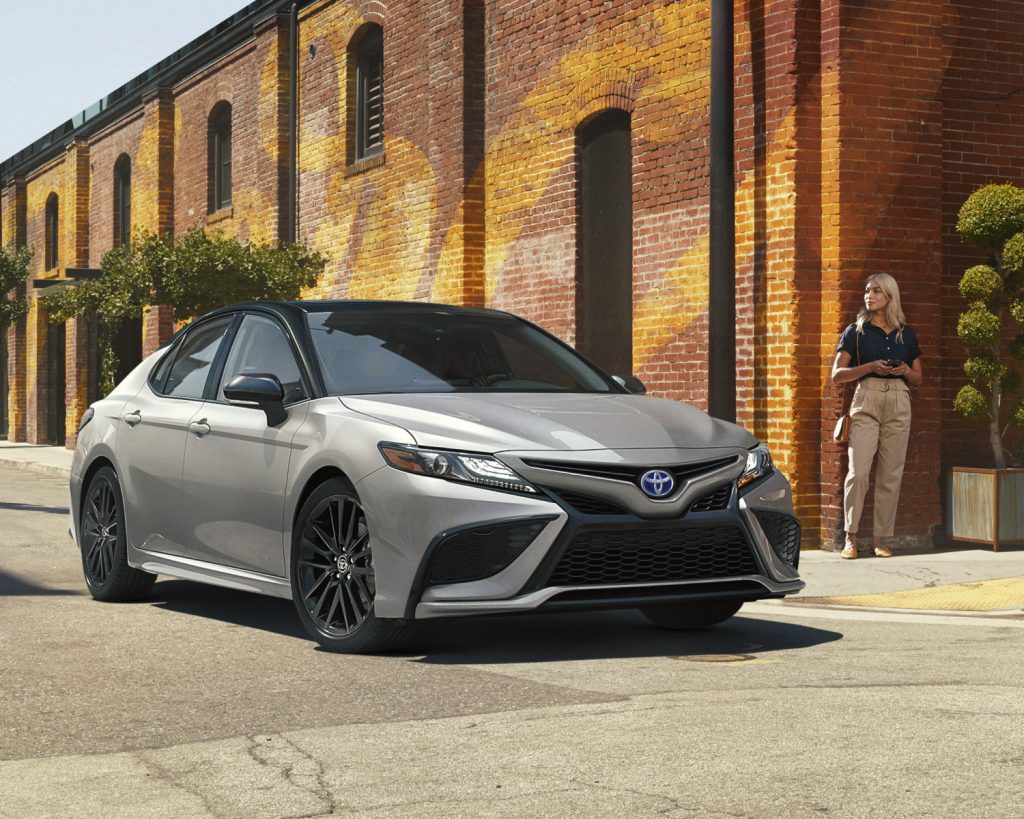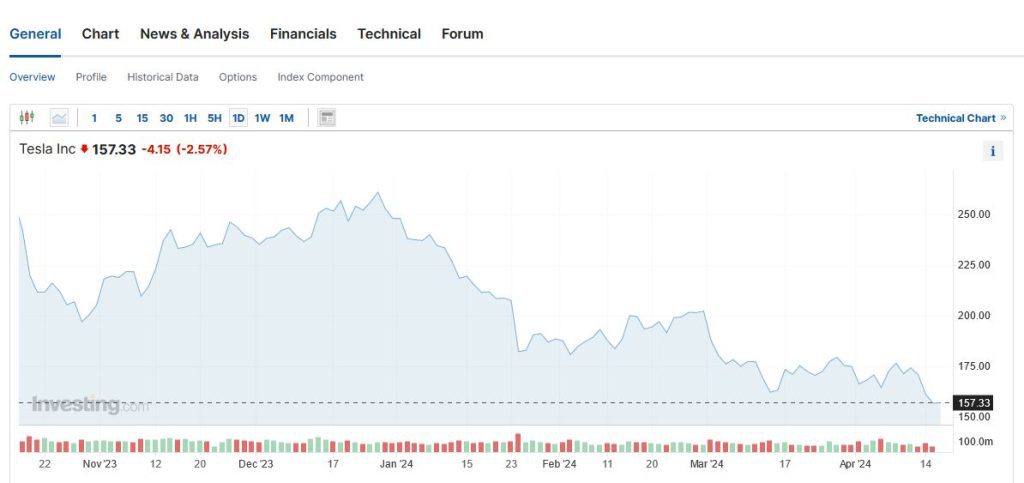When 2024 began, little did we know what a tumultuous first quarter it would bring with it. There have been gains and losses all over the industry, as well as the EV market starting to experience its biggest downturn ever.
There is a lot to cover, so let’s just jump right in.
Hybrid Vehicles The Overall Winners Of Q1
By far the biggest story to emerge from Q1 2024 was the rapid, somewhat unexpected shift in sales of hybrid cars. Of those, the biggest winner was Toyota and their luxury brand Lexus.
According to InsideEVs, in the USA, Toyota shipped 565,098 total main brand and Lexus vehicles in Q1. Of those, Toyota plug-in hybrids amounted to 11,674 units, up 82% year-over-year. Lexus moved 2,658 plug-in hybrids, which is a staggering increase of 177% year-over-year.

In comparison, Toyota’s full EV offering, the bZ4x SUV, saw 1,897 units moved in Q1, up 12% YOY. Lexus’ version, the RZ 450e in its first full production year, saw 1,603 units moved.
The other big winner in the hybrid sales market is Ford. The blue oval moved 508,083 Ford and Lincoln units in Q1 2024, up 7% YOY. Of those, hybrids amounted to 38,421 units, up 42% YOY.

Most of those hybrids were also in the SUV segment, which Ford saw increase 16.8% YOY to 241,891 units. However, their newer hybrid trucks were rapidly gaining sales, especially in the mid-size Maverick range, which saw sales overall, hybrid and ICE only, up 81.87% YOY, totaling 39,061 units.
EV Sales Stall Out Significantly
With a very few special exceptions, EV sales overall plummeted year-over-year between Q1 2023 and Q1 2024. Of those, perhaps the hardest hit was Tesla.
The Big T had revenue of $1.13 billion in Q1 2024, which is only 45% of its Q1 2023 revenue of $2.51 billion. More worrying, with the revenues and sales down, Tesla’s stock slid in a downward trend from January to March.

For the first time in the company’s history, they also recorded an excess of inventory. Q1 saw Tesla move 386,810 units globally, with a total production of 433,371 vehicles, recording an inventory excess of 11.8%.
Ford EV sales also were hit significantly, to the point that they had to cut the F-150 Lightning production line to one shift down from two. Even then, the Lightning is just not moving, selling only 7,743 units globally in Q1.

The only EV that Ford is making that is seeing consistent, if decreased global YOY sales, is the Mustang Mach-E. The CUV sized EV moved 9,589 units in the US alone, up 77.3% YOY.
Across the entire US non-Tesla EV market, the 19 brands that make EVs sold a total of just over 102,000 units. While this represents a roughly 18% increase YOY, many of the models from brands like Hyundai, Kia, Mazda, Nissan, and VW only had their first full production year start in 2024.
Premium Brands Land High Customer Satisfaction Scores
The premium segment of the market, with vehicles between $50,000 and $150,000 MSRP per unit, scored the highest J.D. Power Customer Satisfaction Index (CSI) scores in Q1.

Topping them all, Lexus was ranked best in sales experience, dealer service, and overall with a CSI of 897 out of a possible 1,000. Coming in a very strong second was Porsche at 894, and Cadillac trailed slightly in third at 883.
These high scores come from a concerted effort in the premium segment to reduce vehicle service appointment wait times from over 6 days, to the 5.4 days recorded in Q1 2024. Despite this, there has been a shift in customer preferences, with over 35% with in-warranty vehicles choosing accredited aftermarket service centers over dealer servicing.

Mass market and economy vehicle segments are seeing slight increases in wait times, up from 4.8 to 5.2 days. As well, parts and labor prices have increased year-over-year, with the average customer spending $140 for non-warranty service, up $15 from Q1 2023.
Interest Rate Decline & Income Boost Spur More New Car Purchases
12 month median interest rates topped out at 8.3% in November 2023, yet across the entirety of Q1 2024, rates decreased from 8.0% to 7.7%. While 0.3% might not seem all that significant, it has made the industry shift from a seller’s market to a buyer’s market.
It has been so significant that looking at product income versus finance reserves in Q1, income has had a median increase from 59% to 61.8%. Over that same period, finance reserves have dropped from 41% to 38.2%.

In year over year analysis, this has meant that overall Q1 2024 saw manufacturers and dealerships capture 3% more profit per sale than in Q1 2023. Instead of relying entirely on financing loans, the pure profit supports the customer lifecycle better by bringing more new customers in the door and retaining them through servicing.
In fact, vehicle service contracts (VSCs) beyond the standard warranty period, aka extended warranties, were the backbone of both the interest rate drop and the income boost in Q1 2024. VSC sales overall are the best value-add to each sales, and year-over-year, just under 1% more were sold in 2024 than Q1 2023.
As a result, more customers are coming in the door to buy new cars. This has also increased sales in the dealership used lots, as the VSCs sold there are almost pure profit. Many used cars are out of warranty and only come with a 12 or 24 month guarantee from the dealership, so customers buying 3 to 5 year contracts is, quite literally, money in the bank.
Some Models Saw Significant Downturns
While a lot of manufacturers are growing overall, specific models from many manufacturers saw sharp declines in sales and satisfaction.
Key among these is BMW’s Mini brand. Bring out a new Cooper and Countryman model for 2025, sales of the current models have nosedived by 13% YOY. The Countryman SUV was the hardest hit, dropping almost a full 25% compared to 2023.

The Cooper hardtop coupe, the “main model” of Mini, slid downhill by 10%, and the four door variant dropped 21%. Only the convertible was out of the red, with just under 20% increased sales over Q1 2023.
Ford’s relatively new Bronco was also a model that was particularly hard hit, leading to a dismal Q1. The Bronco, across all trims, dropped a full 26% in sales year over year, moving only 24,066 units. To compare, the Jeep Wrangler, often seen as the Bronco’s main competition, was up 1% in Q1, moving a full 38,308 units.
One of the worst hit models of all, however, were Audi SUVs. Specifically, petrol powered versions slid drastically as the BEV versions gained traction.
The Q5 fell 33% YOY in Q1, the Q7 tumbled 35%, and the gigantic Q8 fell off the cliff edge by 37%. Only the CUV-sized Q3 gained sales by 80% YOY, moving 6,926 units in Q1 2024.
The Midsize Market Is Where Customers Are Headed If Not After SUVs
While economy cars will always have their place in the market, the midsize market is where most customers purchased vehicles in Q1. This also does track somewhat with the first point made in this article, as hybrid sedans and CUVs are mostly within this range.
Stalwart representatives of the family sedan such as the Toyota Camry, Honda Accord, and Nissan Altima were the big sales successes here, even if the Accord and Altima were down in sales year-over-year.

Hyundai also snuck in over 10,000 units in Q1 with the Sonata, their midsize offering. The Elentra was their biggest mover at 36,962 units, however that qualifies as an economy car, despite being a sedan.
That being said, the percentage of new vehicles sold being SUVs in 2023 was a shocking 80% of the total, and it’s on track to be even more this year.
Overall Thoughts
Over Q1 2024, we’ve seen EV sale drop, hybrid sales surge, and the midsize market become the focus of customers. This isn’t to say that the luxury, premium, ultra-luxury, supercar, or econobox markets didn’t also have their own ups and downs.
We think that the fact that the midsize market, in both cars and SUVs, is where most customers focus is a sign of the times. For the average American family, midsize is the Goldilocks zone of practicality combined with economy and, quite often, driving fun.
There is a reason that Hyundai went back to the drawing board a few years back with the Sonata’s handling, and made it very sharp and progressive instead of numb and lazy. Toyota has also tightened up the handling and ride of the Camry over the years, so that even though it’s less than $30,000 on average, it feels like it’s worth $30,000.
The biggest surprise for us was the sharp and immediate decline of EVs. A few manufacturers are somehow pulling out sales from a hat, but the general consensus is that hybrids, combining electric efficiency with petrol-powered familiarity, are where 2024’s market trends are headed.
Overall, we think that Q1 2024, despite a rough start in January, definitely set the trends for the rest of the year. Come Q1 2025, we wouldn’t be surprised to see EVs down a few more percentage points, while hybrids start to take over the market.
2024 will also see the release of one of the most anticipated midsize premium CUVs for a while, the Porsche Macan EV. It comes in just under $100,000, but orders are piling up so fast that they’re already waitlisting until the middle of 2025.
We look forward to analyzing what it’s first year sales will be like compared to its soon to be discontinued petrol powered predecessor!









